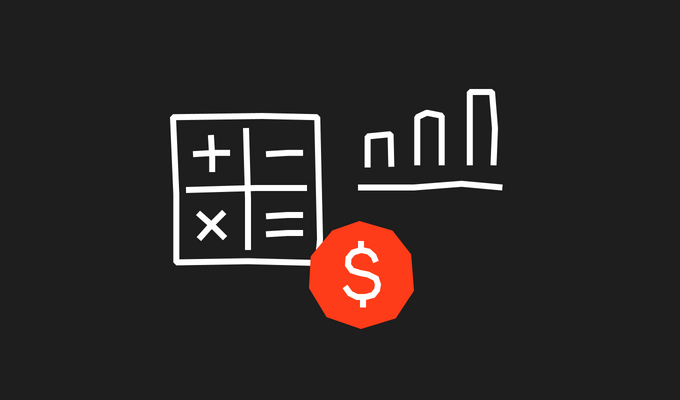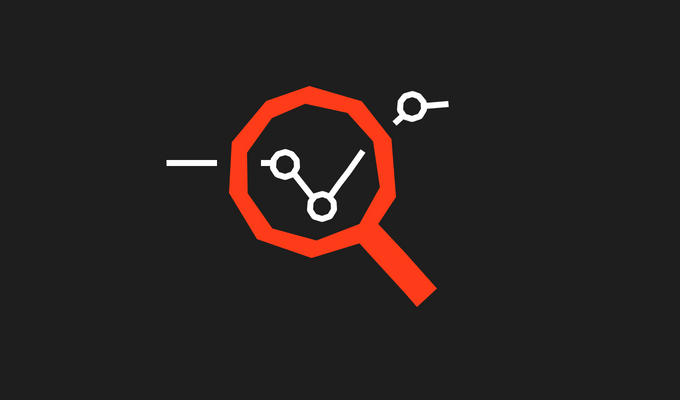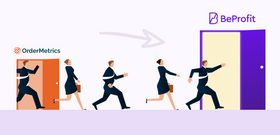6 Steps to Build a Successful Hybrid Ecommerce Marketing Campaign
Published August 25, 2022

Successful ecommerce businesses need a blend of short-term and long-term marketing to achieve sustainable growth. These two types of marketing previously operated in parallel to each other.
But in the past year, three factors have affected the old marketing belief:
- An increasing realisation within the ecommerce industry of the importance of brand
- The rising costs of paid advertising
- The convergence of performance and brand created by mobile
The result is a new approach that gives the best of both worlds: hybrid marketing.
What is a hybrid marketing campaign?
Hybrid marketing is when short-term and long-term marketing techniques are deployed together in a single campaign. This combines their benefits while also offsetting their deficiencies.
Painting with broad strokes for a moment, we could say that short-term marketing — such as paid advertising — is:
- Demand-driven
- Fast
- Highly targeted
- Measurable with hard data
But it’s also:
- Expensive
- Transactional — all about the sale
- Short-lived
Long-term marketing — like brand-building — is:
- Self-sustaining
- Meaningful and purpose-driven
- More potent
- Relatively inexpensive
But it’s also:
- Slow
- Time-consuming
- Harder to quantify
Why not take the best bits of both to create marketing campaigns that are highly targeted and data-driven but deliver branded messages? Here are six steps to create a successful hybrid ecommerce marketing campaign for your business.
1. Optimise your performance marketing
Let’s start by getting the method of delivery into shape. Budget currently wasted on speculative or under-cooked ad campaigns could be better spent elsewhere as part of a hybrid marketing campaign.
Tighten up your performance marketing by:
- Carrying out A/B tests on landing pages, copy, colours, and calls to action
- Ensuring your keywords are closely matched to your ad, and your ad is closely matched to its landing page
- Checking for low-performing keywords and adding them to your negative keywords list so you know not to use these again
- Using less than 20 keywords per ad group
- Scouring Google Analytics to see the best days, times, locations, and devices for conversions, then targeting those
- Incorporating user-generated content within your paid media
- Testing various bidding strategies to see which delivers the best results
- Paying for your ads using a Juni card to get ROAS-boosting cashback
2. Invest in building your brand
Put any budget you’ve gained to good use by optimising your performance marketing. Channel it into long-term marketing strategies, like building your brand.
You need to create a connection with customers that goes beyond a simple transaction. Develop relationships that will endure, even if your paid media campaigns have stopped. Invest time, effort, and budget in making your customers feel part of something bigger.
Build your brand by establishing:
- Your brand values and brand story
- What makes your brand different from your competitors
- Potential brand advocates and what will motivate them to support you
- How you will create a community around your brand based on a common purpose
- The habits that will keep customers thinking about your brand every day
- What success looks like and how you will measure it
3. Apply performance marketing techniques to your brand
Your paid media is fine-tuned, and you have a clear idea about your approach to branding. Now bring them together to create a hybrid marketing campaign. That's what clothing brand tentree did. They tested whether mobile optimised brand ads with strong creative visuals could build brand awareness and increase sales. The result was a 1.39x increase in purchases, a 30% increase in brand awareness, and a 47% increase in standard ad recall.
To bring this approach to your ads:
Instil your campaign with your brand values and tone of voice
Everything about this campaign needs to be authentically you. Whether it’s written copy or a video voiceover, the ad needs to sound like your brand.
“Run the day. Don’t let it run you.”
Sounds familiar doesn’t it? Many would recognize it’s Nike speaking with zero context. This Hubspot article gives more examples and pointers on developing your brand voice.
Establish a clear visual identity in your campaign
In a Facebook experiment on building brand in performance campaigns, 57% of brands created brand awareness uplifts not just for themselves, but for their competitors too. This was because their campaigns lacked distinctive and recognisable visual identities.
Tie your values to something tangible and visible to help consumers to differentiate your brand from others. Facebook recommends leading with strong visual branding within the first three seconds.
Target a broader audience than usual
With a hybrid campaign, it’s not all about the immediate sale. That means you can afford to lower your cost per click by targeting a broader audience than you might normally consider for PPC campaigns.
Commerce-led brand agency Northern suggests that this approach can further increase brand reach (and deliver more precise measurement) by targeting only those who have not previously been exposed to the brand.
Guide your customers to take action
Ensure your target audience takes the action you want them to take after viewing your hybrid campaign by incorporating a direct response element. This could be signing up for, downloading, or buying something — whatever makes the most sense in the context of your campaign.
Nik Sharma, direct-to-consumer ecommerce expert and founder of landing page builder Hoox, recommends varying your approach by order value. He suggests orders under $150 can be converted directly from a hybrid marketing campaign, whereas a sign-up or download is more suitable for higher ticket items.
4. Measure your hybrid marketing KPIs
When taking a hybrid approach to ecommerce marketing, you also need to take a hybrid approach to measuring it. That means combining the hard data generated by short-term marketing and soft data available for long-term marketing to see how your campaign is performing.
To measure soft data, your KPIs might be:
- Brand awareness
- Brand affinity
- Net promoter score (NPS)
- Share of voice (SOV)
Hard data KPIs include:
- Click-through rate (CTR)
- Customer acquisition costs (CAC)
- Lifetime value of customers (LVC)
- Share of the market (SOM)
Bring all of your KPIs into a single spreadsheet to determine the performance of your hybrid marketing campaign. You’ll find a downloadable template in this hybrid marketing white paper.
5. Keep testing
The insights you gain from measuring your KPIs will help you to return to a process of A/B testing. How would adjusting your creative, copy, keywords, targeting, or landing page give your campaign even more impact next time? Optimise to get better results over time.
6. Add more value
This is the stage to capitalise on your efforts by reinforcing your brand to potential customers.
Asked what attracts them to buy from certain brands over others (beyond price and quality), 66% of consumers said they preferred brands with a great culture — those that do what they say they will do and deliver on their promises.
Show that the brand values showcased in your campaign are genuine. Develop the initial connection you made with your audience by creating follow-up campaigns that are true to those values.
Achieve this by:
- Using retargeting ads to cost-effectively reach people who engaged with your hybrid campaign
- Popping up with useful content or desirable products that are closely aligned with your brand values
- Reaching the right person with the right product at the right time
Start your first hybrid marketing campaign today
Explore whether a hybrid campaign would deliver better results for your ecommerce business. Get started immediately on combining performance and brand by:
- Putting an end to wasted PPC spend by making your ads more effective and more efficient
- Considering the story and values that will set your brand apart
- Thinking about what a successful hybrid marketing campaign would achieve and how you will measure this
To make your hybrid marketing spend stretch even further, get 2% cashback on eligible ad spend for your first 30 days, and up to 1% thereafter when you get Juni.









